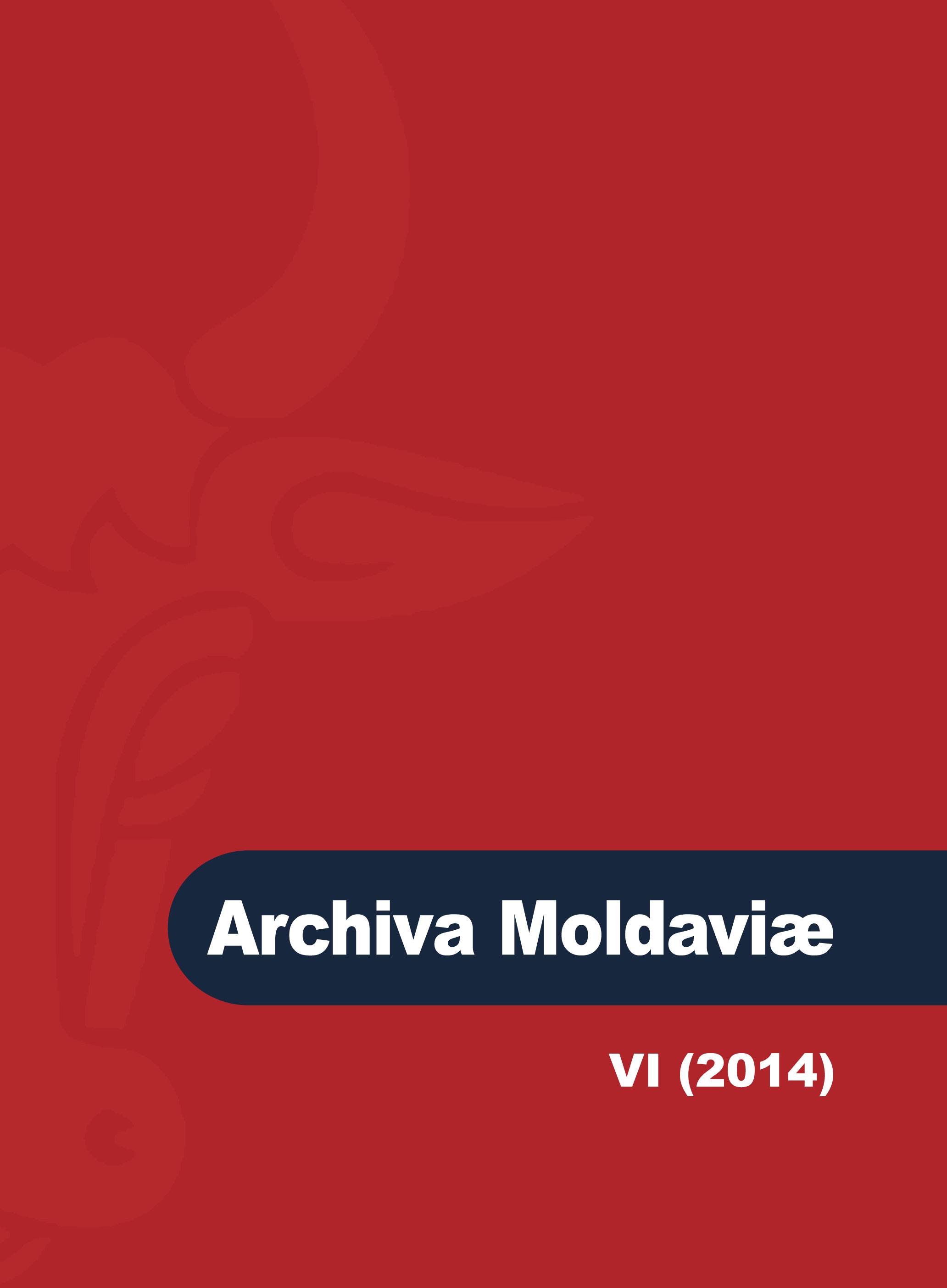Stema şi drapelul satului Dănceni, raionul Ialoveni*
The coat of arms and the flag of the village of Dănceni
(district of Ialoveni)
Author(s): Silviu Andrieș-TabacSubject(s): History, Local History / Microhistory
Published by: Societatea de Studii Istorice din România
Keywords: heraldry; vexillology; coat of arms; flag; village of Dănceni; district (rayon) of Ialoveni; Republic of Moldova; Bessarabia, Ureche family
Summary/Abstract: The first documented mention of the village of Dănceni, in the district (rayon) of Ialoveni appeared in a source dated April 16, 1617 (1725): a charter, known only through a Romanian translation, issued in Iaşi by Prince Radu Mihnea, confirming the possession of Nestor Ureche, great vornic (governor) of Ţara de Jos, over all his villages (inherited, came through donations or purchased, as already confirmed by the previous Princes). Among the list of estates there was also the „village Dănicini upon Işnovăţ and part of the village of Chilii of Işnovăţ”, the latter being, in fact, the village of Cheile (Işnovăţului), integrated today in the area of the city of Ialoveni. The name of the village of Dănceni probably comes from the name of an owner Danciul, as in the case of homonymous village of Dănceni in the district (ţinut) of Soroca, where this etymology has been established using documentary evidence. The research of Danciul, the man who gave his name to this village should be among the closest ascendants of the first known owner – the great vornic Nestor Ureche (* about 1550 to 1555, † 1618), father of the chronicler Grigore Ureche. Also, if the village came from the dowry of Nestor’s wife, Danciul may be also one of her ancestors.The ownership of the Ureche family in Dănceni, even before Nestor Ureche, was certified by the documents. It is also known that Nestor Ureche used a hereditary heraldic achievement, as attested by seals connected with three generations. Thus, the mark of the Ureche family was chosen as the main charge of the coat of arms of Dănceni village, as a symbol of the former property of this illustrious family of boyars, over the estate of Dănceni.The second key element from this project is the heraldic color of field – cherry-red – a characteristic enamel personifying the name of Işnovăţ watercourse, upon which is located the village of Dănceni.The third heraldic charge is a fish, which symbolizes the Lake of Dănceni, famous for its fish attraction. "The Great Lake" of Dănceni is mentioned in an act of demarcation of the domain of the village, dating from July 12, 1777.The coat of arms of the Dănceni village is: cherry-Gules, with the mark of Ureche family (a label of three points with patty endings, the one in the middle finishing in crosslet-patty) Or, over a fish Argent in fess. Coronet of a village Or.The flag is a square canvas cherry-red, bearing the yellow mark of Ureche family, accompanied in the lower third of the canvas by a white fish in fess.The above-mentioned symbols, conceived by the author of this article and drawn by the artists Mariana Şlapac and Iurie Caminschi, were approved by the National Committee of Heraldry the day of July 2, 2013 (protocol no. 195-IV) and by the Dănceni Village Council the day of October 17, 2013 (decision no. 4.8).
Journal: Archiva Moldaviae
- Issue Year: VI/2014
- Issue No: 6
- Page Range: 79-88
- Page Count: 10
- Language: Romanian

